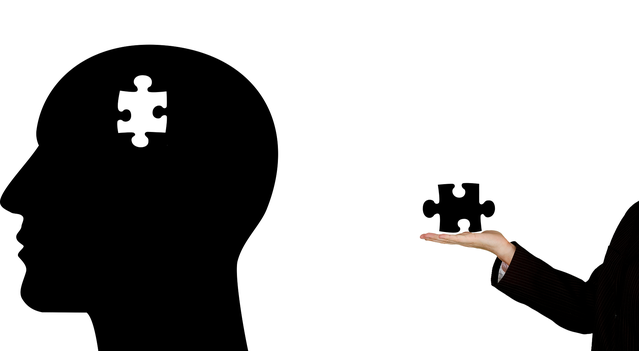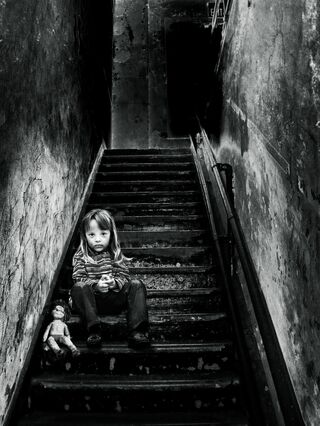Eating Disorders
Early Explorations of the Neuroscience of Pica
Case studies can help us begin to understand the brain's role in Pica onset.
Posted August 23, 2021 Reviewed by Jessica Schrader
Key points
- Pica is the compulsive eating of non-edibles by both humans and non-humans.
- Malnutrition, memory deficits, anxiety, and kidney dysfunction could contribute to Pica development.
- Medications for obsessive-compulsive disorder have helped eliminate Pica symptoms.

While causes of all eating disorder (ED) types have been difficult to determine, one ED in particular, Pica, is especially under-researched.
Pica is the compulsive eating of non-edible food items (e.g., glass and nails) for at least one month.1 It is most prevalent in infants and children; however, Pica has also been identified in adults2 and animals.
We still don’t know what causes Pica, but some common themes from case studies have emerged.
Nutritional Stress
One potential cause of Pica is malnutrition. Malnutrition can be voluntary (e.g., anorexia) or involuntary (e.g., food insecurity).
Malnutrition-induced Pica occurs in adult and adolescent South African giraffes.3 During the South African dry months (i.e., March through November) these giraffes develop geophagia (i.e., eating dirt) and osteophagia (i.e., eating bones), which is considered Pica behavior.3

Pica development in these giraffes is likely caused by a lack of available dietary potassium, phosphorus, magnesium, and calcium during the South African dry months.3 Eating non-foods could be a way for these giraffes to fulfill their nutritional needs.
No sex differences were found in this study. However, giraffes with Pica behavior did show one unusual ailment: kidney stones and kidney lesions. This is important to note because kidney dysfunction restricts blood flow to the brain, which could cause memory deficits.
Memory Deficits
Memory deficits, especially those acquired from brain injuries, are another potential cause of Pica.
In separate studies, adults with memory loss and acquired lesions to/dysfunction in brain regions involved in memory (i.e., middle temporal gyrus; anterior and bilateral temporal lobes) developed Pica symptoms.4, 5, 6 Importantly, none of these individuals had Pica symptoms prior to brain injury. This suggests that memory deficits might contribute to Pica development.

Why memory deficits might contribute to Pica development isn’t clear. One possibility is that acquired brain injuries cause sensory perception dysfunctions, which could disrupt the ability to differentiate edible foods from non-edible foods. This is seen in dementia, where memory loss changes a person’s knowledge of flavors and alters their food preferences.
Consequently, memory loss could cause sensory dysfunction, which could cause Pica.
Anxiety and Compulsivity
Relationships between obsessive/compulsive behavior and Pica are a more recent finding. In these cases, eating non-edibles becomes a way to reduce anxiety.
In a case study of a 35-year-old woman, the stress of her failing relationship with her husband caused her sudden desire to consume chalk.2 The woman had no previous desire to eat chalk, and she only desired to eat it after stressful interactions with her husband. Compulsively eating the chalk was a way for her to relieve her relationship anxiety. Of note, the woman was also diagnosed with major depression.

Another case study involves a 43-year-old woman who was abandoned by her family as an infant.9 Unlike the first case study, this woman developed a wall plaster eating habit at age 6 after being sent to boarding school; her habit continued into middle adulthood. Like the first case study, her Pica habit persisted as a way to relieve her anxiety and reduce her loneliness.9 Unlike the first case study, however, this woman had no other major psychological diagnoses (e.g., depression; psychosis; psychological deficits). Of note, she was anemic, though, with mild body shape dissatisfaction and related ED behaviors (e.g., food restriction and excessive exercise).

Anxiety-induced Pica was also found in a case study of a 17-year-old girl.7 Since childhood, this adolescent experienced distressing anxiety and intrusive thoughts about eating the mud in front of her house. Eating this specific mud was the only way for her to relieve her anxiety.7 Her thoughts about eating the mud were significantly intrusive, sometimes lasting two hours daily. Notably, she also had no other major psychological diagnoses, as well as no family history and/or bodily predispositions to anxiety.
Finally, a case study of a 19-year-old woman also links anxiety with Pica development.8 This woman began compulsively eating pencil nibs to ease her anxiety; her habit lasted four years. Like other case studies, the woman showed no family history of obsessive-compulsive disorder (OCD); she did, however, have iron and vitamin B12 deficiency.8
What's interesting about these cases is the lack of predisposition to anxiety disorders. Despite this, all women developed specific fixations on eating non-food items for anxiety relief.

Effective treatment across these cases included medications used to treat OCD. For example, serotonin reuptake inhibitors (i.e., SSRI; a medication that increases serotonin levels for OCD treatment) eliminated desires to consume chalk and pencil nibs, while clomipramine (i.e., an OCD medication) eliminated the desire to eat mud. Similarly, SSRI treatment reduced, but did not eliminate, the desire to eat wall plaster. This further suggests that obsessive/compulsive tendencies could cause Pica.
Nonetheless, OCD wasn't the single cause for Pica in all of these case studies. In the pencil nib and iron deficiency case, iron supplements did not eliminate pencil nib eating; SSRI treatment did, however, eliminate pencil nib eating. Consequently, in this specific case, iron deficiency was not a cause of Pica, but high anxiety with compulsive tendencies was.
In contrast, in the wall plaster and iron deficiency case, iron deficiency was a cause of Pica. Here, both iron supplements and SSRI treatment helped reduce the individual's wall plaster consumption. Therefore, in this case, iron deficiency contributed to Pica development.
Conclusions
With common themes (e.g., OCD; memory loss) about what causes Pica emerging, researchers can begin looking at potential biological causes for Pica. Early evidence from these case studies suggests that memory deficits, malnutrition, kidney dysfunction, and anxiety are worth exploring as biological causes for Pica. Moving forward, we need to focus on what specific neurological mechanisms might be contributing to Pica development.
References
1Kumsar, N. (2013). The behavior of eating class, with radiological findings: A case of pica. Journal of Neuropsychiatry & Clinical Neuroscience, 25, E46-E48.
2Bhatia, M., & Gupta, R. (2009). Pica responding to SSRI: An OCD spectrum disorder? The World Journal of Biological Psychiatry, 10, 936-938.
3Langman, V. (1978). Giraffe pica behavior and pathology as indicators of nutritional stress. The Journal of Wildlife Management, 42, 141-147.
4Mendez, M., & Foti, D. (1997). Lethal hyperoral behavior from the Klüver-Bucy syndrome. Journal of Neurology, Neurosurgery, & Psychiatry, 62, 293-294.
5Lilly, R., Cummings, J., Benson, F., & Frankel, M. (1983). The human Klüver-Bucy syndrome. Neurology, 33, 1141-1145.
6Funayama, M., Muramatsu, T., Koreki, A., Kato, M., Mimura, M., & Nakagawa, Y. (2017). Semantic memory deficits are associated with pica in individuals with acquired brain injury. Behavioral Brain Research, 329, 172-179.
7Baheretibeb, Y., Law, S., & Pain, C. (2008). The girl who ate her house – Pica as an Obsessive Compulsive Disorder. Clinical Case Studies, 7, 3-11.
8Is pica classified in OCD spectrum? A case report. Psychiatry and Clinical Psychopharmacology, 24.
9Tatay-Manteiga, A. (2020). Pica: Obsessive-compulsive spectrum disorder, recurrent depression or eating disorder? Actas Esp Psiquiatr, 48, 89-96.




